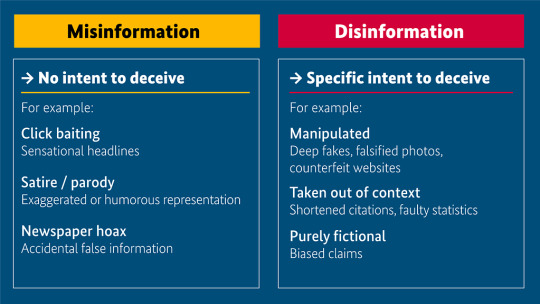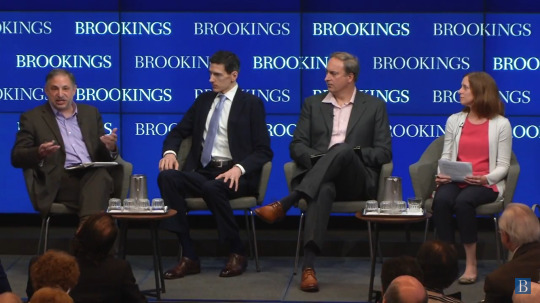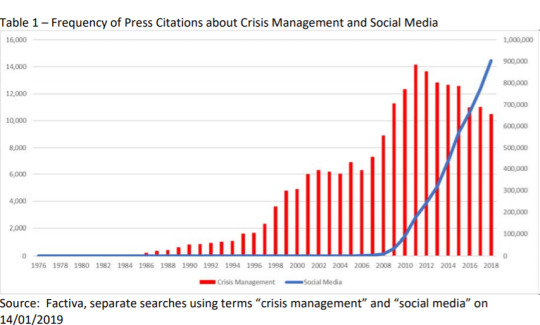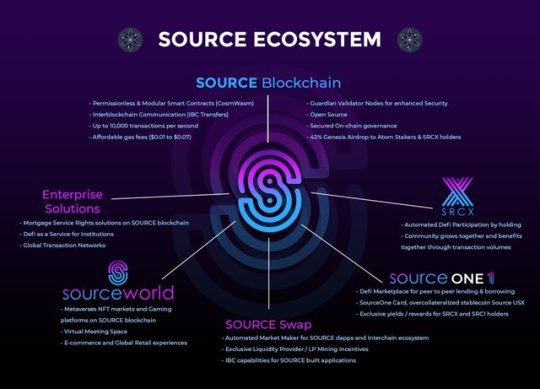#Technology-Based Smart Label
Explore tagged Tumblr posts
Text
Smart Labels: The Game-Changer for Innovative and Secure Packaging
Embrace the next generation of packaging by stepping into the future with smart label packaging and smart labels that bring unparalleled innovation to your products. These cutting-edge solutions go beyond traditional labeling, offering advanced functionalities that enhance both the security and efficiency of your operations.
One of the most significant advantages of this technology is the integration of smart label QR codes and smart label tracking systems. These features allow you to track your products in real time, providing you with valuable insights into their journey from production to the hands of your customers. This enhanced visibility not only streamlines your supply chain but also fortifies your brand's security by reducing the risk of counterfeiting and theft.
Smart packaging is more than just a trend—it's a revolutionary approach that incorporates smart labels and packaging solutions to create a seamless and interactive experience for both businesses and consumers. By leveraging Technology-Based Smart Labels, you can achieve superior results in terms of product authenticity, traceability, and consumer engagement. These labels can carry a wealth of information, from product details and usage instructions to promotional offers, all accessible through a simple scan.
Partnering with top Smart Labels companies and Smart Labels Manufacturers is key to staying ahead in this rapidly evolving industry. These industry leaders provide access to the latest innovations, including smart labels Tamper-Evident Labels, which ensure your products remain secure throughout their lifecycle. Additionally, smart storage QR labels offer a smart way to manage inventory, while qr code smart labels technology enables instant access to essential product information, enhancing both the user experience and product security.
By integrating these advanced smart label technologies into your packaging, you’re not just adopting a new trend—you’re setting a new standard for innovation, security, and consumer engagement in your industry. This forward-thinking approach will position your brand as a leader in the market, ensuring that you stay competitive and relevant in the eyes of your customers.

#Smart label packaging#smart labels#smart label QR codes#smart label tracking#smart packaging#smart labels and packaging solutions#Technology-Based Smart Label#smart label services#smart label barrcode#smartlabel QR code generator#smart labels solutions#smartlabel QR code testing#smart label service provider#smart label technology#Smart Labels companies#Smart Labels Manufacturers#smart labels Data Embedded Barcodes#smart labels Temperature-Sensitive Labels#smart labels Tamper-Evident Labels#smart labels Near Field Communication#smart labels Holograms and Security Labels#smart labels for storage#smart storage qr labels#qr code smart label#vcqru
0 notes
Text
AI projects like OpenAI’s ChatGPT get part of their savvy from some of the lowest-paid workers in the tech industry—contractors often in poor countries paid small sums to correct chatbots and label images. On Wednesday, 97 African workers who do AI training work or online content moderation for companies like Meta and OpenAI published an open letter to President Biden, demanding that US tech companies stop “systemically abusing and exploiting African workers.”
Most of the letter’s signatories are from Kenya, a hub for tech outsourcing, whose president, William Ruto, is visiting the US this week. The workers allege that the practices of companies like Meta, OpenAI, and data provider Scale AI “amount to modern day slavery.” The companies did not immediately respond to a request for comment.
A typical workday for African tech contractors, the letter says, involves “watching murder and beheadings, child abuse and rape, pornography and bestiality, often for more than 8 hours a day.” Pay is often less than $2 per hour, it says, and workers frequently end up with post-traumatic stress disorder, a well-documented issue among content moderators around the world.
The letter’s signatories say their work includes reviewing content on platforms like Facebook, TikTok, and Instagram, as well as labeling images and training chatbot responses for companies like OpenAI that are developing generative-AI technology. The workers are affiliated with the African Content Moderators Union, the first content moderators union on the continent, and a group founded by laid-off workers who previously trained AI technology for companies such as Scale AI, which sells datasets and data-labeling services to clients including OpenAI, Meta, and the US military. The letter was published on the site of the UK-based activist group Foxglove, which promotes tech-worker unions and equitable tech.
In March, the letter and news reports say, Scale AI abruptly banned people based in Kenya, Nigeria, and Pakistan from working on Remotasks, Scale AI’s platform for contract work. The letter says that these workers were cut off without notice and are “owed significant sums of unpaid wages.”
“When Remotasks shut down, it took our livelihoods out of our hands, the food out of our kitchens,” says Joan Kinyua, a member of the group of former Remotasks workers, in a statement to WIRED. “But Scale AI, the big company that ran the platform, gets away with it, because it’s based in San Francisco.”
Though the Biden administration has frequently described its approach to labor policy as “worker-centered.” The African workers’ letter argues that this has not extended to them, saying “we are treated as disposable.”
“You have the power to stop our exploitation by US companies, clean up this work and give us dignity and fair working conditions,” the letter says. “You can make sure there are good jobs for Kenyans too, not just Americans."
Tech contractors in Kenya have filed lawsuits in recent years alleging that tech-outsourcing companies and their US clients such as Meta have treated workers illegally. Wednesday’s letter demands that Biden make sure that US tech companies engage with overseas tech workers, comply with local laws, and stop union-busting practices. It also suggests that tech companies “be held accountable in the US courts for their unlawful operations aboard, in particular for their human rights and labor violations.”
The letter comes just over a year after 150 workers formed the African Content Moderators Union. Meta promptly laid off all of its nearly 300 Kenya-based content moderators, workers say, effectively busting the fledgling union. The company is currently facing three lawsuits from more than 180 Kenyan workers, demanding more humane working conditions, freedom to organize, and payment of unpaid wages.
“Everyone wants to see more jobs in Kenya,” Kauna Malgwi, a member of the African Content Moderators Union steering committee, says. “But not at any cost. All we are asking for is dignified, fairly paid work that is safe and secure.”
35 notes
·
View notes
Text
Clint Schenkloth at Lutheran Confessions:
I don't know if facts matter much anymore but I guess I'll still just share some basic facts. When Musk and Flynn begin targeting Lutheran Social Service and Catholic Charities, labeling the payouts in the federal government as "illegal," this is just crazy talk, but crazy talk with consequences. First of all it's crazy because the government also pays billions to Musk's own companies. Why aren’t there screen shots of those payments labeling them “illegal?” But it's also crazy because these are either grants awarded to non-profits based on a competitive application process, grants first funded by the government in its budgeting process; or it's replacement designee funding where the federal government said, "We want these basic services to be provided but we are contracting with your organization (because you have a track record of providing social services well) to do the work, or make the disbursements." This kind of rhetoric isn't just absurd; it’s dangerous. It feeds into a broader trend of demonizing institutions that have long provided essential services, especially to marginalized communities. The hypocrisy is blatant—Musk benefits massively from government contracts and subsidies, yet he and Flynn attack social service organizations that operate under the same basic funding principles. These funds aren't some kind of "secret handout"—they're either competitively awarded grants or designated contracts to ensure critical services are delivered. The government has always partnered with non-profits to extend its social safety net. This isn't new, and it's certainly not illegal. [...]
The Hypocrisy of the Attacks
Elon Musk's companies—including Tesla, SpaceX, and The Boring Company—have received billions in government subsidies, tax breaks, and contracts. If federal funding of LSS is “illegal,” then so are the billions funneled into private corporations through tax incentives, defense contracts, and technology investments. The real issue here isn’t legality—it’s an attack on the very idea that society should provide care for the most vulnerable. LSS and similar organizations exist precisely because communities need them. Cutting off their funding wouldn’t eliminate the need for food, housing, or resettlement services—it would simply make it harder for people to get help. The alternative is an overwhelmed and inefficient government bureaucracy, or worse, leaving people to fend for themselves. These attacks aren’t just reckless rhetoric; they undermine the social fabric that makes communities stronger. If the goal is a healthy, self-sufficient society, then supporting organizations like LSS is not just smart policy—it’s essential.
God-disobeying scoundrels Michael Flynn and Elon Musk launch attacks on the Lutheran Social Services, in which they falsely call the charity a “money-laundering operation.”
6 notes
·
View notes
Text
Best Practices for Safe and Efficient LV Electrical Installations in 2025

Introduction
Low Voltage (LV) electrical installations are the backbone of safe and reliable power distribution in residential, commercial, and industrial settings. In 2025, as energy demands rise and smart technologies evolve, following best practices in LV installations is more important than ever to ensure safety, efficiency, and compliance.
This blog outlines the latest best practices for designing, installing, and maintaining LV electrical systems according to international standards and industry trends.
What Is an LV Electrical Installation?
LV (Low Voltage) refers to electrical systems that operate at voltages up to 1000V AC or 1500V DC. These installations include:
· Electrical panels and switchboards
· Distribution circuits
· Lighting systems
· Sockets and fixed appliances
· Motor control systems
Proper LV installation ensures that power is distributed safely and efficiently without risk of fire, equipment failure, or personnel injury.
Why Best Practices Matter in 2025
In the age of smart buildings, renewable integration, and digital energy management, the quality of your LV installation affects:
· Operational reliability
· Energy efficiency
· System lifespan
· User safety
· Regulatory compliance
Failing to adhere to best practices can result in costly downtime, legal penalties, and even life-threatening hazards.
Top Best Practices for Safe and Efficient LV Electrical Installations
1. Conduct Detailed Load Analysis
Before starting any LV installation, carry out a comprehensive load assessment to determine the power requirements, load types, and future expansion needs. This ensures:
· Proper cable sizing
· Correct protection device selection
· Optimized system capacity
Use load flow software tools and factor in diversity and demand coefficients for accuracy.
2. Follow International Standards (IEC, NEC)
Compliance with recognized standards ensures installations meet safety and performance benchmarks. Key references include:
· IEC 60364 for LV electrical installations
· NEC (NFPA 70) for code-compliant wiring in the U.S.
· ISO 50001 for energy management integration
Also, refer to local electrical regulations where applicable.
3. Use Certified, High-Quality Components
Always use LV components from certified manufacturers — this includes:
· Circuit breakers (MCCBs/MCBs)
· Residual current devices (RCDs)
· Surge protection devices (SPDs)
· Busbars, cables, and enclosures
Poor-quality components may not withstand fault conditions, leading to short circuits, fires, or system failure.
4. Ensure Proper Cable Management and Sizing
Correct cable selection and layout are critical:
· Size cables based on current capacity, voltage drop, and ambient temperature
· Use LSZH (Low Smoke Zero Halogen) cables for fire safety
· Label and route cables cleanly using trays, ducts, and tie-downs
Improper cable management is a leading cause of overheating and system inefficiency.
5. Install Proper Earthing and Grounding Systems
An effective earthing system protects against:
· Electric shock
· Equipment damage
· Lightning surges
Use TT, TN, or IT systems as per the application and ensure resistance values are within acceptable limits (e.g., <1 ohm for sensitive equipment).
6. Use Protection Coordination and Selectivity
Install protective devices in a coordinated hierarchy to ensure:
· Quick isolation of faults
· Minimal disruption to unaffected areas
· Avoidance of cascading tripping
Selectivity between breakers and fuses enhances safety and ensures continuity of service.
7. Integrate Smart Monitoring and Control
Modern LV installations benefit from IoT-enabled devices and energy monitoring software. This helps with:
· Real-time energy usage tracking
· Predictive maintenance alerts
· Power quality monitoring
· Remote switching and control
Smart LV systems are increasingly used in data centers, green buildings, and industrial automation setups.
8. Conduct Periodic Testing and Maintenance
Post-installation, regular inspection and testing ensure sustained safety and performance. Best practices include:
· Thermal imaging to detect overheating
· Insulation resistance testing
· RCD trip time checks
· Earth loop impedance measurement
Document all tests and create a preventive maintenance schedule based on manufacturer recommendations and operating conditions.
Common Mistakes to Avoid
· Overloading circuits without upgrading breakers
· Skipping grounding in temporary setups
· Using outdated wiring diagrams
· Mixing incompatible components
· Neglecting ventilation in panel enclosures
Conclusion
Safe and efficient LV electrical installations in 2025 require more than just technical knowledge — they demand a proactive approach that combines regulatory compliance, technology integration, and quality workmanship. By following these best practices, contractors and facility managers can minimize risks, optimize performance, and build future-ready electrical systems.
Whether you’re designing a commercial building, upgrading an industrial site, or installing a smart home system, investing in safe LV practices today is the smartest move for tomorrow.
Connect With Us
Whether you’re a project engineer, contractor, facility manager, or developer — Almond Enterprise is ready to support your next electrical challenge with confidence and capability.
🔗 Visit: www.almondenterprise.com 📞 Contact: [email protected] | +974 33858416
6 notes
·
View notes
Text
Why Shipease is the Smartest Choice for E-Commerce Shipping in 2025

Why Shipease is the Smartest Choice for E-Commerce Shipping in 2025
In the ever-evolving world of e-commerce, efficient and reliable shipping isn’t just a feature — it’s the backbone of customer satisfaction and business growth. As we step into 2025, one platform continues to stand out for e-commerce businesses looking for a smarter, smoother, and more scalable shipping solution: Shipease.
Here’s why Shipease is the smartest choice for e-commerce shipping in 2025:
1. All-in-One Shipping Dashboard
Shipease eliminates the hassle of juggling multiple courier partners. With its centralized dashboard, you can compare rates, generate labels, schedule pickups, and track shipments — all in one place. It’s designed to save time, cut manual errors, and improve operational efficiency.
2. AI-Powered Courier Recommendations
Thanks to its smart algorithm, Shipease automatically suggests the best courier based on delivery location, cost, and performance history. This means faster deliveries, lower return rates, and happier customers.
3. Real-Time Tracking and Notifications
Today’s customers expect to know exactly where their order is. Shipease provides real-time tracking updates to both you and your buyers, reducing WISMO ("Where is my order?") queries and improving customer experience.
4. Seamless Integration with Major Marketplaces
Whether you're selling on Amazon, Shopify, WooCommerce, or your own website, Shipease easily integrates with major e-commerce platforms. Sync your orders effortlessly and manage your shipping in a streamlined workflow.
5. Flexible Shipping Options
From same-day delivery to cash on delivery (COD) and reverse logistics, Shipease offers a wide range of shipping options. This flexibility allows you to cater to diverse customer preferences and boost your overall conversion rates.
6. Affordable Pricing and Transparent Billing
Shipease offers competitive shipping rates with no hidden charges. With clear invoicing and billing insights, e-commerce sellers get complete visibility over shipping expenses, making budgeting and forecasting a breeze.
7. Automated NDR and RTO Management
Non-delivery reports (NDRs) and return-to-origin (RTO) shipments can be a nightmare for online sellers. Shipease automates the process of addressing delivery failures, communicates with customers, and helps minimize return costs.
8. Dedicated Support and Account Management
Need help fast? Shipease offers responsive customer support along with dedicated account managers who understand your business goals and help optimize your shipping strategy.
9. Data-Driven Insights for Smarter Decisions
With in-depth analytics and shipping performance reports, you can track KPIs, optimize courier selection, and uncover areas to improve logistics and customer experience.
10. Future-Ready Technology
In 2025, speed and adaptability are key. Shipease stays ahead of the curve by continuously upgrading its tech infrastructure, ensuring faster processing, enhanced security, and new features that support your e-commerce growth.
Conclusion
E-commerce success in 2025 hinges on delivering orders quickly, reliably, and affordably — and Shipease is built to help you do just that. Whether you’re a small seller or a large-scale brand, Shipease offers the tools, tech, and support you need to ship smarter, scale faster, and deliver better.
Switch to Shipease today — because smart businesses deserve smart shipping.
2 notes
·
View notes
Text
Best 10 Blockchain Development Companies in India 2025
Blockchain technology is transforming industries by enhancing security, transparency, and efficiency. With India's growing IT ecosystem, several companies specialize in blockchain development services, catering to industries like finance, healthcare, supply chain, and gaming. If you're looking for a trusted blockchain development company in India, here are the top 10 companies in 2025 that are leading the way with cutting-edge blockchain solutions.
1. Comfygen
Comfygen is a leading blockchain development company in India, offering comprehensive blockchain solutions for businesses worldwide. Their expertise includes smart contract development, dApps, DeFi platforms, NFT marketplaces, and enterprise blockchain solutions. With a strong focus on security and scalability, Comfygen delivers top-tier blockchain applications tailored to business needs.
Key Services:
Smart contract development
Blockchain consulting & integration
NFT marketplace development
DeFi solutions & decentralized exchanges (DEX)
2. Infosys
Infosys, a globally recognized IT giant, offers advanced blockchain solutions to enterprises looking to integrate distributed ledger technology (DLT) into their operations. Their blockchain services focus on supply chain, finance, and identity management.
Key Services:
Enterprise blockchain solutions
Smart contracts & decentralized apps
Blockchain security & auditing
3. Wipro
Wipro is known for its extensive research and development in blockchain technology. They help businesses integrate blockchain into their financial systems, healthcare, and logistics for better transparency and efficiency.
Key Services:
Blockchain consulting & strategy
Supply chain blockchain solutions
Smart contract development
4. Tata Consultancy Services (TCS)
TCS is a pioneer in the Indian IT industry and provides robust blockchain solutions, helping enterprises optimize business processes with secure and scalable decentralized applications.
Key Services:
Enterprise blockchain development
Tokenization & digital asset solutions
Decentralized finance (DeFi) applications
5. Hyperlink InfoSystem
Hyperlink InfoSystem is a well-established blockchain development company in India, specializing in building customized blockchain solutions for industries like finance, gaming, and supply chain.
Key Services:
Blockchain-based mobile app development
Smart contract auditing & security
NFT marketplace & DeFi solutions
6. Tech Mahindra
Tech Mahindra provides blockchain-as-a-service (BaaS) solutions, ensuring that businesses leverage blockchain for improved transparency and automation. They focus on finance, telecom, and supply chain industries.
Key Services:
Blockchain implementation & consulting
dApp development & smart contracts
Digital identity management solutions
7. Antier Solutions
Antier Solutions is a specialized blockchain development firm offering DeFi solutions, cryptocurrency exchange development, and metaverse applications. They provide custom blockchain solutions for startups and enterprises.
Key Services:
DeFi platform development
NFT & metaverse development
White-label crypto exchange development
8. HCL Technologies
HCL Technologies offers enterprise blockchain development services, focusing on improving security, efficiency, and automation across multiple sectors.
Key Services:
Blockchain-based digital payments
Hyperledger & Ethereum development
Secure blockchain network architecture
9. SoluLab
SoluLab is a trusted blockchain development company working on Ethereum, Binance Smart Chain, and Solana-based solutions for businesses across industries.
Key Services:
Smart contract & token development
Decentralized application (dApp) development
AI & blockchain integration
10. Mphasis
Mphasis provides custom blockchain solutions to enterprises, ensuring secure transactions and seamless business operations.
Key Services:
Blockchain for banking & financial services
Smart contract development & deployment
Blockchain security & risk management
Conclusion
India is emerging as a global hub for blockchain technology, with companies specializing in secure, scalable, and efficient blockchain development services. Whether you're a startup or an enterprise looking for custom blockchain solutions, these top 10 blockchain development companies in India provide world-class expertise and innovation.
Looking for the best blockchain development partner? Comfygen offers cutting-edge blockchain solutions to help your business thrive in the decentralized era. Contact us today to start your blockchain journey!
2 notes
·
View notes
Text
File: ALF
SCP#: ALF
Cond Name: Alf the Alien/ The Alien. Life. Form.
Object Class: Safe
Special Containment Procedures: SCP-ALF has been given unlimited access to the common areas of Site-AA, though reportedly his most favorite area to be in is the cafeteria. Foundation security is to always update observation staff at Site-AA where SCP-ALF is, even when he is clearly in camera view. SCP-ALF has been given a watch that alerts him when he is leaving the Level 1 Clearance common areas. Should SCP-ALF enter an area of Level 2 Clearance or higher he will be shocked by the watch until he backs away. This has proven the most effective deterrent as just telling him to not go does nothing since he'll probably forget.
In the event of a containment breach at Site-AA, SCP-ALF is to join Foundation staff in entering one of the nearest Cavafy Reality Concealment Safety Bunkers.
SCP-ALF is under the assumption that he is the last of his kind, he is to never be made aware the truth shows otherwise. All incoming transmissions form surviving Melmacian's is to be recorded and disrupted form reaching earth by the Telecommunications Monitoring Office's lunar satellite division.
Description: SCP-ALF is a member of Species of Interest: Melmacian's. Melmacian's are an endangered species that suffered from a nuclear disaster ending their home world. SCP-ALF was one of the only survivors of the destruction after crashlanding on earth by accident. SCP-ALF was in possession of a damaged ship and some advanced technology all of which had been confiscated by the Foundation. Though most of it was deemed unusable due to how it was all nuclear based and quite easy to malfunction and lead to nuclear meltdown. As such it was dismantled and recycled for parts.
SCP-ALF like the other Melmacian's is a small humanoid creature with black eyes, a snout like mouth, and oddly long hair on his head. He possesses an overweight body, stubbly feed with short legs, long arms with fat hands, and a completely fur covered body. SCP-ALF knows how to handle advanced technology, but his personality does not present him as very smart. SCP-ALF is very snarky and likes to crack jokes whenever he can. He also has a huge appetite being able to eat almost any kind of food presented in front of him within seconds. Though most peculiarly he claims that cats are quite similar to the cattle of his world and thus likes to eat them as well.
However, despite his fun-loving personality, SCP-ALF suffers from depression believing he is the last of his kind. To help with this SCP-ALF was not confined to a containment cell but allowed to roam freely within Site-AA. This and him interacting with Foundation staff and having lively and hilarious conversations has helped SCP-ALF in dealing with his depression and survivor's guilt. It is because of his social personality that makes most Foundation staff smile and his lack of desire to leave is why SCP-ALF is labeled as Object Class: Safe.
SCP-ALF was discovered in 1986 when he crash landed in the garage of suburban home after suddenly appearing in our solar system and being shot down by a ISSJ-4 “Crow” from Mobile Task Force Apollo-1 "Orion's Belt". The pilot claimed he showed up out of nowhere and fired at his ship thinking it was a hostile craft. SCP-ALF's location was quickly found, and the family was amnestied while he was brought into Foundation custody. After reviewing interviews and first testing logs Site Director James fell in love with his jokes and assigned him to Site-AA as a way to boost morale with staff.
It's actually thanks to SCP-ALF that Foundation staff now have access to Trofeam Molecular Conversion Consumable Stations within Cavafy Reality Concealment Safety Bunkers as he complained about it regularly. SCP-ALF is actually used regularly to show Foundation staff how common areas can be improved in relaxation and has helped other Foundation sites make things more comfortable for their staff during break time. SCP-ALF has been made aware of this and likes to joke about him being an essential asset to the Foundation. To this day no one has refuted his claims as most either don't dare ruin his joy or secretly agree with him.
.
SCP: Horror Movie Files Hub
#DZtheNerd#SCP: Horror Movie Files#SCP: HMF#SCP Foundation#SCP Fanfiction#SCP AU#SCP#TV show#Sitcom#Comedy#Non Horror#SCP-ALF#Site-AA#Safe
9 notes
·
View notes
Text
Understanding Misinformation in Today's Media

In our fast-paced digital world, misinformation is everywhere. It’s super important to know what’s true and what’s not. Here, we’ll explore how misinformation spreads, the impact it has, and what we can do about it.

What Is Misinformation? Misinformation is false or misleading info shared without harmful intent. Disinformation, on the other hand, is false info shared with the intent to deceive. Knowing these differences is crucial because it helps us navigate the confusing media landscape. Misinformation affects how we communicate by creating confusion and mistrust, making it harder for people to agree on important issues.
How Misinformation Spreads Misinformation often spreads through social media, driven by algorithms that prioritize engagement over accuracy. For example, platforms like Facebook and TikTok use recommendation algorithms that show you content based on what you interact with. This can amplify sensational or misleading posts because they get more clicks and likes. A video from the Australian Institute of International Affairs explains how this leads to echo chambers, where users only see information that matches their beliefs. This makes it tougher to think critically and consider different perspectives.


Real-World Examples of Misinformation One clear example is the altered video of Dr. Willie Ong, which made false claims about a non-FDA-approved supplement using his likeness. This kind of misrepresentation can lead people to trust unsafe products, putting their health at risk. Another example is the fake broadcast showing Russian President Putin resigning, which was actually a manipulated video. Both instances show how misinformation can create confusion and panic, leading people to act on false information.

Consequences of Misinformation The Brookings Institution highlights that misinformation can have serious consequences for democracy, like manipulating voters and eroding trust in institutions. With digital platforms, misinformation spreads faster than ever, making it harder for people to tell fact from fiction. This isn’t just a modern problem; misinformation has existed throughout history, but it’s become more dangerous with technology. For instance, during the COVID-19 pandemic, false information about vaccines made many people hesitant to get vaccinated, which had real-world impacts on public health.

Combating Misinformation So, how can we fight back against misinformation? Here are some simple ways: Fact-Checking: Organizations that check stories for accuracy help us trust the info we consume. Education: Teaching people how to spot fake news helps them think critically about what they read online. Platform Responsibility: Social media companies should take action to limit the spread of false information or at least label it when they find it. Community Efforts: Encouraging conversations and sharing reliable sources keeps everyone informed and engaged.

The Role of Social Media Algorithms Recent research shows that social media algorithms amplify our natural biases. They push information that aligns with our beliefs, making it easy to fall into echo chambers. Users need to understand how these algorithms work, and tech companies should consider changing them to create healthier online spaces. This way, we can be exposed to a wider range of views and information.
Conclusion In conclusion, misinformation is a significant issue that impacts all of us. By understanding how it spreads and taking steps to combat it, we can create a more informed society. Always question what you see online and strive to share accurate information. Misinformation isn’t just a personal problem. It affects everyone, It spreads quickly on social media, often thanks to algorithms that prioritize engagement over truth. To tackle this issue, we need to be smart about the information we consume. Fact-checking, education, and awareness are key.
Social media companies should also take action to limit the spread of false information. Together, we can work toward a better-informed society by questioning what we see and sharing reliable sources. Staying alert and proactive is our best way to combat misinformation and ensure we’re all getting the truth.
2 notes
·
View notes
Text
How Innovation Is Reshaping the Food Industry

Food innovation refers to introducing novel ideas, products, and technologies that change how society produces, processes, packages, distributes, and consumes food. It goes beyond merely creating new recipes or flavors - food innovation encompasses advances in agriculture, food science, sustainability, and packaging. The goal is to enhance efficiency, safety, nutrition, and the overall consumer experience.
The need for food innovation arises from the ever-changing demands of consumers and the pressing challenges faced by the industry. As the global population continues to grow, so does the demand for food. Additionally, sustainability concerns, climate change, and limited resources prompt exploring alternative food growing and production methods. Innovations in food aim to enhance food security, minimize environmental impact, and offer consumers healthier, more diverse options.
Food innovation occurs through a combination of research, collaboration, and creativity. Scientists, entrepreneurs, farmers, and food industry professionals work together to develop new technologies and processes. Research institutions and startups play a crucial role in conducting experiments, testing new concepts, and bringing innovative products to the market.
In recent years, the food industry has witnessed groundbreaking innovations reshaping how people interact with food. The plant-based movement has gained immense traction, with plant-based alternatives for meat, dairy, and seafood becoming mainstream. Companies have developed plant-based burgers, vegan cheeses, and sustainable seafood alternatives using cutting-edge technologies. Beyond plant-based options, innovations have also focused on alternative protein sources, such as insect-based proteins and lab-grown meats, offering sustainable and protein-rich alternatives.
Swedish startup Mycorena is boosting microbial protein production through its fungi-based mycoprotein called Promyc. This ingredient can be used to create meat and tuna alternatives, beverage additives, and dessert ingredients, offering plant-based and sustainable options for consumers.
Finnish startup Onego Bio has developed a product genetically identical to egg whites using fermentation, and without using actual chickens. It uses precision fermentation of a microflora called Trichoderma reesei to produce ovalbumin, the protein found in chicken egg whites. This technology offers a sustainable and animal-friendly alternative for various food applications, including baked goods, desserts, sauces, and dressings.
Companies like New Culture are incorporating animal-free casein into their cheeses through precision fermentation. This breakthrough allows them to produce animal-free mozzarella cheese, offering a delicious and cruelty-free alternative to traditional dairy products.
In addition, consumers increasingly seek transparency in food choices, leading to the clean label movement. Brands are responding by using simple natural ingredients and avoiding artificial additives and preservatives.
Breakthrough innovations in the food industry are revolutionizing how society grows, produces, and consumes food, focusing on sustainability, nutrition, and convenience. One such innovation is plastic-free and smart packaging. Food companies are exploring biodegradable and even edible packaging solutions in response to environmental concerns. Smart packaging using nanotechnology is also gaining popularity, allowing consumers to assess food safety and quality easily.
The Internet of Things (IoT) in agriculture employs sensors and data analytics for optimizing crop conditions, irrigation, and pest control, reducing resource usage. Food waste reduction solutions, such as surplus food redistribution platforms, are being developed to combat the global food waste crisis. Moreover, biotechnology and data science advances enable personalized nutrition, tailoring dietary recommendations to individuals based on their genetic makeup, lifestyle, and health goals. These innovations promise a more sustainable, healthier, and efficient food future.
Food innovation is driving a remarkable transformation in the food industry, responding to the challenges and opportunities of today. From new plant-based products to sustainable agriculture and cutting-edge technologies, the future of food promises to be more diverse, nutritious, and sustainable. As consumers, entrepreneurs, and stakeholders continue to embrace innovation, the food industry's journey toward a more resilient and conscious future is set to continue.
13 notes
·
View notes
Text
Re-thinking Marketting 101
They say that companies just can't figure out how to market their toys (and other goods) without the gender divide. I'm here to call them idiots.
"Blue means boy, Pink means girl" has created a decision starting in the toy aisle and making its way all the way to funerals. Which is *ridiculous* considering that caskets aren't inherently a gendered item.
And because of that simple idea, the varying aisles separate everything they possibly can according to gender.
Which, despite literally reducing their customer base; and thus sales: leads to some *really* strange interpretations of data based on the premise rather than their end goal.
And even leads to the Razor aisle where women's razors are branded luxury items. Denoting how *gently* their razors get clogged with the removed hairs.
Despite both colors of razors having essentially the same technological innovation; it seems to have an impact. Considering that "Agender" razors would break the cultural norm and just be "Too Weird" for customers to purchase.
This has real world impacts as well. Consider the toy Aisle again; when Video Games used to be "Boy Toys" before the electronics aisle was invented.
Because if this branding a cultural identity was created around Stem, and video games, that Entertainment was for children; specifically boys. And kitchens were for women.
It persisted to the point that, in America at least; Women *need* special STEM[Science, Technology, Engineering, Math] programs in order to convince them that it's not just an educational path for people that have Stamen.
Despite the fields literally being developed by hyper-intelligent women that were feminized out of the field to begin with.
Similar to how Women in Iran only recently were convinced that they were smart enough to drive cars; a right they had until about a decade ago.
Why do these myths about branding persist? Why do they work? And more importantly, why does it make people think certain genders are smarter than others?
You know; despite a large number of Millennial Parents knowing better these days?
What researchers and trans people have figured out is that the genderfication of items do appeal more to a mental aspect of a person.
The categories exist for a reason; because sometime they work at describing a certain type of person. Despite the label being incredibly incorrect as to what *exactly* it is describing.
A correlation was found, and it seemed to describe a certain data set. Despite... You know; it describing a set of interests and not a set of genitals.
Are men *more* likely to buy Manly gendered things over perceived feminine items? Or are they more likely to buy gener-neutral variants of things that probably shouldn't be gendered?
This is a question for MattPatt's unreleased fifth channel; MarketTheory. Ironically the marketing analytics were not good enough to support the idea.
That companies and marketing specialists; can't figure out how to recategorize their customer bases is precisely the reason why nobodies on YouTube do so much better with the algorithm than offline business.
They're so used to these categorizations that it comes second nature in a way that they can't explain because they don't have the terminology for it.
And yet; seemingly overnight have not only given offline companies a run for their money--but destroyed entire industries without even realizing it.
And that all circles back to the only two marketing categories that companies can seem to understand "Boy and Girl"... Except... For the third category that broke those barriers long ago; The Electronics Aisle, filled to the brim with Agender toys *only* because they don't fit the paradigm set by the other two aisles.
5 notes
·
View notes
Text
SOURCE PROTOCOL

SOURCE is building limitless enterprise applications on a secure and sustainable global network. Defi white-labelled services, NFT markets, RWA tokenization, play-to-earn gaming, Internet of Things, data management and more. SOURCE is providing blockchain solutions to the real world and leveraging the power of interoperability.
SOURCE competitive advantages over other blockchain projects
For builders & developers — Source Chain’s extremely high speeds (2500–10000+ tx / per second), low cost / gas fees ($0.01 average per tx), and scalability (developers can deploy apps in multiple coding languages using CosmWasm smart contract framework), set it apart as a blockchain built to handle mass adopted applications and tools. Not to mention, it’s interoperable with the entire Cosmos ecosystem.
For users — Source Protocol’s DeFi suite is Solvent and Sustainable (Automated liquidity mechanisms create a continuously self-funded, solvent and liquid network), Reduces Complexity (we’re making Web 3.0 easy to use with tools like Source Token which automate DeFi market rewards), and we’ve implemented Enhanced Security and Governance systems (like Guardian Nodes), which help us track malicious attacks and proposals to create a safer user environment.
For Enterprises — Source Protocol is one of the first to introduce DeFi-as-a-Service (DaaS) in order for existing online banking and fintech solutions to adopt blockchain technology with ease, and source also provides Enterprise Programs which are complete with a partner network of OTC brokerages, crypto exchanges, and neobanks that create a seamless corporate DeFi experience (fiat onboarding, offboarding, and mutli-sig managed wallets)

Why Source Protocol
Firstly, many protocols are reliant on centralized exchanges for liquidity, limiting their ability to scale independently. This creates a lot of the same issues traditional finance has been plagued with for decades.
Next — slow tx speeds, high costs, limited scalability, and inability to collaborate with other chains, has created severe limitations in Gen 2 blockchain infrastructure.
Lastly, there still exists a level of complexity in blockchain applications that remains a barrier to entry for the average user, and there is not enough focus on building “bridges” for the enterprise to adopt this technology easily and quickly.
In summary, consumers are eager for a blockchain ecosystem that can securely and sustainably support mass adopted applications. That’s why we’ve built Source!
Source Protocol’s ecosystem
Source Protocol’s ecosystem includes a full DeFi Suite, a members rewards program and white-label integration capabilities with existing online Web 2.0 enterprises:
Source Swap — An Interchain DEX & AMM built on Source Chain for permission-less listing of $SOURCE-based tokens, native Cosmos SDK assets, cw-20’s, and wrapped Binance Smart Chain (BEP-20) assets.
Source One Market — A peer to peer, non-custodial DeFi marketplace for borrowing, lending, staking, and more. Built on Binance Smart Chain with bridging to Source Chain & native Cosmos SDK assets.
Source Token $SRCX (BEP-20) — the first automated liquidity acquisition and DeFi market participation token built on Binance Smart Chain.
Source One Token $SRC1 (BEP-20) — a governance and incentivized earnings token that powers Source One Market.
Source USX $USX (BEP-20) — Source One Market stablecoin backed and over collateralized by a hierarchy of blue chip crypto assets and stablecoins.
Source Launch Pad — Empowering projects to seamlessly distribute tokens and raise liquidity. ERC-20 and BEP-20 capable.
Source One Card & Members Rewards Program — users can earn from a robust suite of perks and rewards. In the future, Source One Card will enable users to swipe with their crypto assets online and at retail locations in real time.
DeFi-as-a-Service (DaaS) — Seamless white-label integration of Source One Market, Source Swap, Source Launch Pad, and/or Source One Card with existing online banking and financial applications, allowing businesses to bring their customers DeFi capabilities.

Source Protocol Key Components
Sustainable Growth model built for enterprise involvement and mass application adoption
Guardian Validator Nodes for enhanced network security
Integration with Source Protocol’s Binance Smart Chain Ecosystem and Decentralized Money Market, Source One Market
Source-Drop (Fair community airdrop and asset distribution for ATOM stakers and SRCX holders)
Interoperable smart contracts (IBC)
High speed transaction finality
Affordable gas fees (average of $0.01 per transaction)
Highly scalable infrastructure
Open-source
Permission-less Modular Wasm + (EVM)
Secured on-chain governance
Ease of use for developers
conclusion
SOURCE is a comprehensive blockchain technology suite for individuals, enterprises and developers to easily use, integrate and build web3.0 applications. It is a broad-spectrum technology ecosystem that transforms centralized web tools and financial instruments into decentralized ones. Powering the future of web3,
Next — slow tx speeds, high costs, limited scalability, and inability to collaborate with other chains, has created severe limitations in Gen 2 blockchain infrastructure.
Lastly, there still exists a level of complexity in blockchain applications that remains a barrier to entry for the average user, and there is not enough focus on building “bridges” for the enterprise to adopt this technology easily and quickly.
In summary, consumers are eager for a blockchain ecosystem that can securely and sustainably support mass adopted applications. That’s why we’ve built Source!
For More Information about Source Protocol
Website: https://www.sourceprotocol.io
Documents: https://docs.sourceprotocol.io
Twitter: https://www.twitter.com/sourceprotocol_
Instagram: https://www.instagram.com/sourceprotocol
Telegram: https://t.me/sourceprotocol
Discord: https://discord.gg/zj8xxUCeZQ
Author
Forum Username: Java22
Forum Profile Link: https://bitcointalk.org/index.php?action=profile;u=3443255
SOURCE Wallet Address: source1svnzfy5fafuskeaxmf2sgvgcn6k3sggmssl8d7
2 notes
·
View notes
Text
Upgrade Your Packaging with Innovative Smart Label Solutions
Experience the future of packaging with smart label packaging and smart labels that redefine efficiency. Explore how smart label QR codes and smart label tracking technology enhance your brand's visibility and security. From smart packaging to comprehensive smart labels and packaging solutions, discover how Technology-Based Smart Labels can transform your operations. Connect with top Smart Labels companies and Smart Labels Manufacturers for advanced smart labels Tamper-Evident Labels, smart storage QR labels, and qr code smart labels to stay ahead in the market.

#Smart label packaging#smart labels#smart label QR codes#smart label tracking#smart packaging#smart labels and packaging solutions#Technology-Based Smart Label#smart label services#smart label barrcode#smartlabel QR code generator#smart labels solutions#smartlabel QR code testing#smart label service provider#smart label technology#Smart Labels companies#Smart Labels Manufacturers#smart labels Data Embedded Barcodes#smart labels Temperature-Sensitive Labels#smart labels Tamper-Evident Labels#smart labels Near Field Communication#smart labels Holograms and Security Labels#smart labels for storage#smart storage qr labels#qr code smart label#vcqru
0 notes
Text
Explore Top Sustainable Packaging Trends in 2023
Introduction:
Sustainable packaging has become a significant concern for businesses and consumers alike, as the world continues to prioritize environmental consciousness.
With the increasing focus on sustainability, it’s crucial to explore the top sustainable packaging trends that will shape the packaging industry in 2023. This article delves into the various sustainable packaging trends that are expected to make a significant impact in the coming year.

Importance of Sustainable Packaging:
Sustainable packaging plays a prime role in minimizing waste, conserving resources, and minimizing environmental impact.This doesn’t only prioritize eco-conscious consumers but also is very beneficial for businesses in the long run.
Sustainable packaging can enhance brand reputation, attract environmentally conscious customers, and lead to cost savings through optimized material usage and streamlined logistics.
Sustainable Packaging Trends:
Read below to know more about the top Sustainable Packaging Trends that are shaping the future of packaging industry.
Eco-Friendly Packaging Materials:
To achieve sustainable packaging goals, businesses are increasingly turning to eco-friendly materials that have minimal impact on the environment. Three prominent options are:
Biodegradable Packaging: Biodegradable packaging materials are designed to decompose naturally over time, minimizing the piling of waste in landfills. They are formed from plant-based polymers, such as PLA (polylactic acid), which can break down into harmless elements with the help of microorganisms.
Compostable Packaging: Compostable packaging goes a step further by not only breaking down but also providing valuable nutrients to the soil during the composting process. These materials are made from organic matter, such as cornstarch or bagasse, and contribute to a circular economy by turning into compost that can enrich agricultural lands.
Recyclable Packaging: Recyclable packaging materials includes cardboard, glass, and certain types of plastics, can be gathered, refined, and reused to create new packaging or other products. Recycling preserves resources, reduces usage of energy, and minimizes the demand for virgin materials.
Minimalistic Packaging:
One of the emerging sustainable packaging trends is minimalistic design. This approach focuses on eliminating excess packaging and using the bare minimum required to protect and present the product.
Minimalistic packaging not only reduces waste but also enhances the product’s visual appeal, creating a sleek and modern aesthetic.
Packaging Reduction and Lightweighting:
To further minimize the impact of packaging on the environment, companies are vigorously. seeking ways to minimize the amount of material used. Packaging reduction involves optimizing the size and dimensions of packaging to minimize waste, transportation costs, and storage requirements.
Lightweight, on the other hand, aims to decrease the weight of packaging materials without compromising their integrity, leading to energy savings and reduced emissions during transportation.
Smart Packaging Solutions:
Advancements in technology have paved the way for smart packaging solutions that offer enhanced functionality while remaining environmentally friendly. Two notable examples are:
Intelligent Labels: Intelligent labels comprise of RFID (Radio Frequency Identification) or NFC (Near Field Communication) technology to impart real-time insights about the product, such as its origin, ingredients, and expiration date. By enabling consumers to make informed choices, intelligent labels promote transparency and minimize food waste.
Active Packaging: Active packaging involves the integration of active substances or components into the packaging material to extend the shelf life of the product. Oxygen absorbers, moisture control packets, and antimicrobial films are examples of active packaging solutions that help maintain product freshness, reduce spoilage, and minimize food waste.
Plant-Based and Renewable Packaging:
As the demand for sustainable packaging grows, there is a rising focus on plant-based and renewable materials. Packaging created from renewable resources, such as bamboo, sugarcane, or hemp, offers a viable substitute to traditional petroleum-based plastics.
These materials are not only biodegradable or dispensable but also have a lower carbon footprint during production.
Packaging Innovations:
In addition to the aforementioned sustainable packaging trends, packaging innovations continue to drive sustainable practices. Three noteworthy innovations include:
Edible Packaging: Edible packaging materials, often made from natural polymers like seaweed or starch, can be consumed along with the product. This eliminates the need for additional waste and offers a unique, eco-friendly packaging experience.
Water-Soluble Packaging: Water-soluble packaging is created to dissolve when it comes into contact with water, minimizing the amount of waste produced. This type of packaging is particularly applicable for single-use items like detergent pods or dishwasher tablets.
Mushroom Packaging: Mushroom packaging is also known as mycelium packaging, it makes use of the root structure of mushrooms to create a biodegradable and compostable material. It offers a sustainable alternative to foam-based packaging materials, minimizing reliance on non-biodegradable options.
Packaging for E-commerce:
With the emergence of e-commerce, sustainable packaging solutions are crucial to minimizing the environmental impact of shipping and handling.

Sustainable Packaging Trends in the Food Industry:
The food industry is actively adapting to sustainable packaging practices to address the challenges of food waste and environmental impact.
From compostable food containers to eco-friendly food wraps, innovative packaging solutions are being developed to ensure the freshness and safety of food products while reducing the ecological footprint.
Sustainable Packaging Trends in the Beauty and Personal Care Industry:

Sustainable Packaging Trends in the Fashion Industry:
Sustainable Packaging is gaining popularity in the Fashion Industry, as various brands realize the need to minimize environmental impact of products.
Packaging that is created using recycled materials, biodegradable garment bags and innovative ideas such as seaweed-based packaging is becoming increasingly popular.
Sustainable Packaging Trends in the Electronics Industry:
The electronics industry is notorious for its excessive packaging and e-waste. However, manufacturers are now adopting to sustainable packaging trends such as corrugated cardboard, molded pulp, and plant-based plastics to minimize waste generation and improve recycling rates.
Collaboration for Sustainable Packaging:
Collaboration between stakeholders is crucial to drive sustainable packaging initiatives forward. Brands, packaging manufacturers, consumers, and policymakers need to work in harmony to develop and implement effective strategies that boost sustainable practices throughout the supply chain.
Conclusion – Sustainable Packaging Trends:
In conclusion, the packaging industry is witnessing a shift towards sustainability, driven by the growing awareness of environmental issues and consumer preferences.
In 2023, the top sustainable packaging trends will revolve around eco-friendly materials, minimalistic design, packaging reduction, smart solutions, plant-based alternatives, and innovative packaging options.
By adapting to these sustainable packaging trends, businesses can align with consumer values, minimize their carbon footprint, and contribute to a more sustainable future.
FAQs:
Why is sustainable packaging important?
Sustainable packaging is crucial as it helps to minimize waste, preserve resources, and minimize environmental impact. It also improves brand reputation and attracts eco-conscious consumers.
What are some eco-friendly packaging materials?
Eco-friendly packaging materials such as biodegradable packaging, compostable packaging, and recyclable packaging. These materials have minimal impact on the environment and promote a circular economy.
How can minimalistic packaging benefit businesses?
Minimalistic packaging not only reduces waste but also enhances the visual appeal of products, creating a sleek and modern aesthetic. It can attract consumers and differentiate brands in the market.
What are some packaging innovations in sustainability?
Some packaging innovations in sustainability include edible packaging, water-soluble packaging, and mushroom packaging. These innovations offer biodegradable or compostable alternatives to traditional packaging materials.
How can collaboration drive sustainable packaging initiatives?
Collaboration between brands, packaging manufacturers, consumers, and policymakers is crucial to develop and implement effective strategies for sustainable packaging. By working together, stakeholders can drive positive change throughout the supply chain.
2 notes
·
View notes
Text
Smart Tracking & Security: How Electronic Article is Changing 2025

1. What Is Electronic Article Surveillance in 2025?
In 2025, Electronic Article Surveillance (EAS) refers to the technology used to prevent theft and improve asset tracking across industries. Originally designed for retail stores, EAS now plays a broader role in sectors like logistics, catering, healthcare, and more. EAS systems typically include tags or labels attached to items, sensors at exits, and alarms triggered when someone tries to remove tagged items without proper deactivation. With smarter tracking systems and automation, EAS has become more advanced, reliable, and essential in modern business operations.
2. How Electronic Article Surveillance Systems Work Today
The basic working principle of Electronic Article Surveillance involves three key components: electronic tags, sensors (or antennas), and a detection system. When a tagged item is moved through the store or facility, sensors placed near exits scan for active tags. If a tag has not been deactivated or removed properly, the system triggers an alert or alarm. In 2025, EAS systems are more intelligent—they can integrate with CCTV, cloud software, and even mobile alerts to provide real-time notifications and insights.
3. Key Benefits of Using Electronic Article Surveillance for Businesses
Businesses are seeing numerous benefits by implementing Electronic Article Surveillance in their operations. First and foremost, it helps reduce theft, which directly saves money. Secondly, it improves inventory accuracy by allowing real-time tracking of items. Additionally, it creates a visible deterrent to shoplifters or unauthorized access. For industries like retail and catering, EAS not only improves security but also enhances customer trust and operational efficiency. In a fast-paced world, staying secure is a smart move.
4. EAS and Smart Tracking: The Perfect Pair for 2025 Security
Smart tracking has added a new layer of efficiency to Electronic Article Surveillance. By combining EAS with RFID technology and cloud-based systems, businesses can track not only if an item is stolen but also where it is, who last accessed it, and its movement history. This is particularly useful for companies that manage multiple items across various locations. In 2025, EAS systems are no longer passive—they are actively collecting data, monitoring usage, and supporting decision-making processes in real time.
5. Industries Benefiting Most from Electronic Article Surveillance in 2025
Electronic Article Surveillance is no longer limited to retail. Today, industries like hospitality, catering, healthcare, and manufacturing are all seeing the value of this smart technology. Hospitals use EAS to monitor medical supplies and prevent equipment loss. Catering services use it to track trays, warmers, utensils, and even food delivery carts. Supermarkets, electronics stores, and fashion retailers continue to use EAS to safeguard high-value goods. As the technology becomes more affordable, even small businesses are adopting it to protect their assets.
6. Electronic Article Surveillance in Retail: Smarter Theft Prevention
Retail stores remain the primary users of Electronic Article Surveillance. In 2025, EAS systems have become smarter and more precise. For example, tags can now store information about the product, including its price, batch number, and expiration date. These smart tags are connected to the store's inventory software, which helps in automatically updating stock levels when an item is scanned or sold. Retailers are also using EAS in combination with AI-powered cameras to monitor suspicious behavior and improve security response.
7. Catering & Event Management: How EAS Is Protecting Equipment and Supplies
Catering companies like Jaffer Bhai’s are using Electronic Article Surveillance to track expensive kitchen equipment and serving items. At large events, it's easy for trays, beverage dispensers, or cutlery to go missing. With EAS tags on each item, staff can monitor them throughout the event. If any item is taken without authorization, the system immediately triggers an alert. This not only prevents loss but also ensures that inventory is managed efficiently, reducing the cost of replacements.
8. Smart Tags and RFID Integration in Electronic Article Surveillance Systems
One of the biggest advancements in Electronic Article Surveillance is its integration with RFID (Radio Frequency Identification). RFID allows for more data to be stored and retrieved from each tag. For example, a catering service can attach RFID-enabled EAS tags to storage containers that log temperature, location, and usage history. This smart integration ensures both security and operational control. It also helps businesses meet safety standards and customer expectations.
9. Future Trends in Electronic Article Surveillance Technology
In 2025, the future of Electronic Article Surveillance looks highly innovative. AI is now being used to analyze patterns of theft or misplacement. EAS systems can also connect to cloud-based dashboards, allowing managers to access live data from anywhere. Some retailers and service providers are using invisible tags embedded in product packaging. There are even mobile EAS systems that can be used in temporary locations like pop-up stores or mobile catering vans, providing flexible security options.
10. Why Businesses Must Adopt Smart Surveillance Solutions in 2025
Security isn’t a luxury—it’s a necessity in 2025. Whether you're running a retail store, managing a catering service, or operating a warehouse, Electronic Article Surveillance gives you control, reduces loss, and enhances efficiency. With rising costs and tighter competition, businesses can’t afford to lose inventory due to theft or mismanagement. EAS systems not only protect assets but also improve operations by offering insights into movement and usage. For any forward-thinking business, adopting EAS is a smart, future-proof decision.
✅ Call to Action:
Ready to secure your business with the latest in Electronic Article Surveillance? Contact AIDC Technologies India today for tailored EAS solutions built to match your operational needs.
#SmartTracking2025#ElectronicArticleSurveillance#RetailSecurityInnovation#SmartSecuritySolutions#ShopliftingPreventionTech#EAS2025#NextGenRetailSecurity
0 notes
Text
Sustainability and Innovation in Trusted Battery Replacement in Australia
The automotive sector in Australia is witnessing a quiet yet steady transformation. At the heart of this shift stands a growing need for reliable, efficient, and sustainable energy solutions. One key area where this transition is visible is battery replacement. Among the leading names driving this change is Express Battery Replacement, a company known for its sharp focus on performance, responsibility, and customer trust.

A New Outlook on Battery Replacement
Vehicle breakdowns often begin with battery failures. Traditionally, replacements involved delays, waste, and low visibility on long-term value. Express Battery Replacement has taken a different path. The brand has brought structure to a scattered industry, creating a clear system that delivers not just speed, but also accountability.
The demand for trusted battery replacement in Australia continues to rise, and with it, the expectation for cleaner processes and long-term assurance. Express Battery Replacement answers this call with a model that puts customer needs and sustainability first. Their operations are designed to reduce time loss, lower environmental impact, and guarantee product integrity.
Smart Systems That Reduce Waste
A key part of their service design lies in product lifecycle control. Every battery is tracked, tested, and evaluated before reaching the customer. Units that do not meet strict performance metrics are excluded. This reduces product waste and prevents faulty units from entering circulation.
Recycling is built into the company’s structure. Old batteries are collected and processed through approved recycling channels. This not only minimises landfill but also ensures that hazardous material is handled with care. The brand’s focus on disposal is not an add-on; it is a key part of their responsibility model.
Through such integrated practices, Express Battery Replacement strengthens its position as a leader in trusted battery replacement in Australia. The combination of product care and environmental thinking is rare in this space, making their approach both relevant and future-ready.
Innovation Backed by Practical Thinking
What makes Express Battery Replacement stand out is their refusal to complicate. Their systems are clean, their delivery clear. The technology behind their services is built to simplify and support. Mobile units, automated dispatch, and performance-based selection models are used to maintain speed without losing control.
The result is a service that feels immediate but remains structured. This thinking helps the company meet changing customer behaviour without losing grip on quality or values.
As more Australians seek dependable vehicle support, the need for trusted battery replacement in Australia will only grow. Express Battery Replacement is building this trust through reliable outcomes, honest communication, and measurable impact.
Leading by Action
Sustainability is not a statement. It is an action repeated across daily operations. Innovation is not a label. It is a method used to solve problems clearly and consistently.
In both areas, Express Battery Replacement leads with clarity. By combining technology, discipline, and environmental responsibility, they stand as a clear leader in the battery sector, quietly shaping the future of clean, smart mobility in Australia.
#car battery replacement#truck battery replacement#battery replacement in Australia#tyre replacement in Australia
0 notes
Text
Streamlining Beverage Production: Rattan Industrial – Trusted Bottling Line Manufacturer in India
In today’s fast-paced beverage and liquid packaging industry, efficiency, hygiene, and precision are paramount. As a leading bottling line manufacturer, Rattan Industrial India Pvt. Ltd. stands out for its cutting-edge engineering, customized solutions, and robust performance that caters to various industries such as alcohol, dairy, water, juice, and pharmaceuticals.
Why Rattan Industrial? With decades of expertise in industrial process equipment, Rattan Industrial offers fully automated and semi-automated bottling lines designed for scalability and productivity. The company’s bottling line systems are built with stainless steel and food-grade materials to ensure hygiene, longevity, and minimal maintenance.
Key Features of Rattan Industrial’s Bottling Lines:
Custom-Engineered Systems: From rinsing, filling, capping to labelling and packaging, each bottling line is tailored to specific client needs.
Versatile Applications: Suitable for glass, PET, and HDPE bottles in various sizes and shapes.
High Throughput Efficiency: Designed for consistent output and reduced downtime, ensuring maximum ROI.
Integrated Automation: Seamless PLC-based control systems and smart sensors for real-time monitoring and control.
After-Sales Support: Nationwide service network with skilled technicians and readily available spare parts.
Industries We Serve:
Alcohol & Distilleries
Dairy & Milk Packaging
Mineral Water Plants
Juices & Soft Drinks
Pharma & Chemical Solutions
A Partner in Your Production Journey Whether you’re setting up a new production facility or upgrading an existing one, Rattan Industrial provides end-to-end solutions — from design consultation and fabrication to commissioning and training. Their engineering excellence ensures smooth, hygienic, and reliable bottling operations tailored to your product and market needs.
Conclusion If you’re looking for a reliable partner for bottling manufacturers automation in India, Rattan Industrial brings the right blend of technology, quality, and support. With a strong track record across multiple sectors, they are redefining the standards in bottling line manufacturing.
Visit:- https://www.liquorbottlingplants.com/bottling-line.html
0 notes